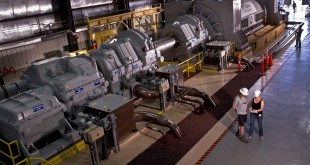Recent advances in the understanding and control of quantum technologies, such as those based on cold atoms, have resulted in devices with extraordinary metrological sensitivities with applications in a vast array of areas ranging from geophysical type applications to satellite independent navigation. To realise this potential outside of a lab environment the size, weight and power consumption need to be reduced. The latest advances in micro-manufacturing technology are being used including waveguide writing and reactive ion beam etching manufacturing methods has allowed for the miniaturisation of quantum technologies such as integrated atom chip based systems. An emerging technology capable of allowing further minaturisation of quantum technology is additive manufacturing, such as 3D-printing. The freedom of design offered during production by 3D-printing allows for rapid development of complex, individually bespoke components and the potential to tune material properties during production.
Additive Manufacturing / 3D Printing and Quantum Technologies are exciting areas of research in their own right and, together, offer multiple opportunities for groundbreaking systems and emergent industries. There are many unsolved problems and we focus on the need to develop new materials, and to optimise them for additive manufacturing processes. Additive Manufacturing is attractive since it allows us to make objects that are not possible to be made in traditional ways, and these objects have the benefits of being more efficacious, more efficient, better tuned and highly personalised – all areas of importance as we move towards an era of quantum based technologies.
Magnetic shielding is an essential component of atom based quantum technologies necessary to provide a suitable magnetic environment and enable sensitive measurements. Currently the best available materials for magnetic shielding are soft magnetic alloys, such as mu-Metal. Despite mu-metal shields being widely used, they are characterised by a relatively high weight and the inflexibility to adapt to more complex geometries, due to manufacturing limitations. While simple shapes such as cylinders can be easily manufactured, linking shields together without loss of performance is challenging. Existing shielding is thus heavy and bulky, limiting the advancement of quantum technology towards portable and miniaturised systems. The majority of production is currently realised through hand machining in workshops which limits the ability to create complicated geometries.
By using 3D-printing in contrast it is possible to design bespoke complex shielding for each application. However to achieve the best possible magnetic shields the additive process used to create the shields need to be optimised to reduce cracking and porosity in the printed structure, which reduces the effectiveness of the magnetic shields. Combining this with post processing of the 3D-printed structure, the ability to produce magnetic shields with complex compact and light weight geometries closer to the structure to be shielded should be realised.
Vacuum technology is another prominent component of quantum technology systems, used to isolate atoms from background gasses. At lower pressures the longer measurement times can be achieved without decoherence19. For compact quantum sensors it is ideal that ultra high vacuum environments are achieved and maintained over long time periods. Since 3D-printing is an additive process, it is possible that small voids and leak channels can form in the material during the printing process. These voids could trap gases which would later vent slowly into the vacuum, making the part unsuitable for ultrahigh vacuum environments. Selection of the material which components are made out of has been shown to reduce these issues in 3Dprinted components inside vacuums.
Researchers from University of Birmingham have demonstrated the use of laser powder bed fusion, an additive manufacturing technique, as a production technique for the components that make up quantum sensors. As a demonstration they have constructed two key components using additive manufacturing, namely magnetic shielding and vacuum chambers. The magnetic shield was designed using computer aided design (CAD) and 3D-printed using the selective laser melting (SLM) process. The initial prototypes for magnetic shields show shielding factors within a factor of 3 of conventional approaches.
Many materials that are commonly used in ultra high vacuum (UHV) are also 3D-printable materials, such as silver, gold, stainless steel and titanium. The low vapour pressures of metals make them ideal for vacuum applications, however this is not the only consideration in determining UHV compatibility. The processes used in 3D-printing metals could potentially give rise to several adverse effects, such as introducing trapped gases resulting in virtual leaks, and micro-leak channels The 3D-printed part was designed using CAD software and titanium (Ti) was chosen as it is a common vacuum material and readily 3D-printed. Furthermore, its non-magnetic properties are well-suited to cold atomic physics. The test piece was printed using direct metal laser sintering of alloy Ti-6Al-4V.
Initial prototypes for 3D-printed magnetic shields show shielding factors within a factor of 3 of conventional approaches. While this may be enhanced further through optimisation of the fabrication and post-processing techniques, the main benefit that this brings is to enable the manufacture of more complex and compact shields, allowing a higher shielding factor per unit weight. This promises to drastically reduce the weight of quantum technology based sensors, where the magnetic shielding can occupy up to 50% of the weight.
As part UK National Quantum Technology Hub in Sensing and Timing, project is launched which will require the use, development and modification of additive manufacturing systems, processing conditions and materials, as well as the design and manufacture of demonstrator systems. The choice of systems will be defined by the needs of the sensing units and the environments in which they will be used. This will require knowledge, and collaborative development, of complete sensor systems and housing into which sensors will be placed and operate. The final goal will be to demonstrate that the use of additive manufacturing can realise more compact and more efficient sensing systems that require low power, and are suitable for scalable manufacture.
References and Resources also include:
 International Defense Security & Technology Your trusted Source for News, Research and Analysis
International Defense Security & Technology Your trusted Source for News, Research and Analysis

